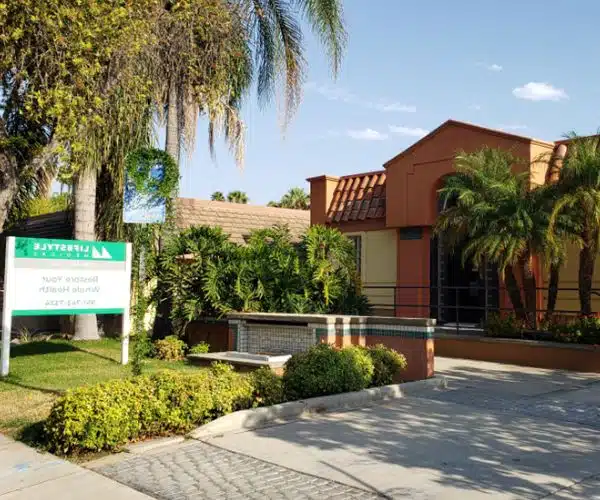Building a sustainable economic model for lifestyle medicine
Dr. Wayne Dysinger left academic health care to start a practice focused on lifestyle medicine that saves 30% to 40% in cost per patient compared to the typical Medicare patient.
May 24, 2023

The first person who told Wayne Dysinger, MD, MPH, FACLM, DipABLM, he might be crazy was himself.
The second person was his dean at Loma Linda University Medical Center, where Dr. Dysinger served as Chairman of the Department of Preventive Medicine. Even Dr. Dysinger’s wife, while always supportive, expressed puzzlement.
Why leave the relatively stable academic environment to enter the wild world of medical startups – a world he knew very little about?
The answer was his passionate belief in the potential of lifestyle medicine.
Dr. Dysinger, a founding board member and past president of the American College of Lifestyle Medicine (ACLM), had spent years integrating lifestyle medicine into family medicine and preparing resident doctors to practice the evidence-based specialty. Most residents enthusiastically embraced utilizing the pillars of lifestyle medicine to address the root causes of chronic disease and left Loma Linda inspired to infuse them into their own medical practices. But inevitably, they grew disillusioned by the difficulty of financially sustaining a lifestyle medicine practice in the dominant fee-for-service payment model.
“Residents would leave Loma Linda passionate about lifestyle medicine but find there were few jobs where they could practice lifestyle medicine,” Dr. Dysinger said. “The restoration of health was not rewarded. They all asked, ‘How do I make money?’”
The future of health care
 Wayne Dysinger, Md, Mph, Faclm, Dipablm
Wayne Dysinger, Md, Mph, Faclm, Dipablm
For that reason, Dr. Dysinger’s ears perked when he got a call from Charlie Martin, a health care executive and investor with decades of experience operating large and complex health systems. Martin had sold the third-largest investor-owned hospital chain he had founded for $1.7 billion. He also had a vision for the future of health care – and it was not hospitals.
“He said ‘Hey Wayne, the future of health care is not in hospital systems; it’s in outpatient primary care. And the future of primary care is going to be lifestyle medicine,’” Dr. Dysinger said. “He saw lifestyle medicine as his next big investment.”
Aside from some basic experience with budgets as department chair, Dr. Dysinger had no experience in the entrepreneurial or start-up sectors of health care. But he viewed a collaboration with Martin as a unique opportunity to create a sustainable lifestyle medicine-centered primary care practice model that other clinicians could replicate. In 2015, he took a leap of faith, cleaned out his office and left Loma Linda to do exactly that.
The hardest work
The first couple years were spent trying to figure out a sustainable economic model for the new practice and who its patients should be. Dr. Dysinger and Martin agreed immediately that they would avoid the traditional fee-for-service model because it is challenging to effectively practice lifestyle medicine in a system that encourages quick patient interactions and high patient volume. Lifestyle medicine, on the other hand, takes lengthier and more frequent appointments to change behavior.
It was by far the hardest work Dr. Dysinger had ever done.
“Building a practice from scratch takes a lot of work, and I had some sleepless nights,” Dr. Dysinger said. “It felt like we were making good progress but going further and further into debt. I’m a fairly persistent guy, though, and really believed that my purpose was to create something replicable so that physicians who want to practice lifestyle medicine can do that and get paid a decent wage for it.”
A capitated reimbursement model
One breakthrough came from across the world. In 2018, Dr. Dysinger was contacted by a young Australian businessman named Arwin Soetanto who was looking to invest in health care and was intrigued by what Dr. Dysinger and Martin were building in Southern California. Soetanto became a partial owner, bringing much needed expertise to the day-to-day business operations
The result was Lifestyle Medical, a primary care practice with flagship clinics in Riverside and Redlands that is infused with lifestyle medicine and committed to high-value care. The majority of the practice’s patients are seniors covered by traditional Medicare and Medicare Advantage. A minority of the practice are individuals under 65 who either pay a Direct Primary Care fee or have commercial insurance that is combined with a low-entry annual membership fee. While the reimbursement model for each category of patients varies, all incorporate capitated reimbursements and aspects of value-based care.
 Lifestyle Medical Clinic
Lifestyle Medical Clinic
Capitated reimbursements – fixed amounts paid in advance for providing patient care – measured by cost savings, improved clinical outcomes and better patient satisfaction offered the path to solid economic profitability, Dr. Dysinger said. Lifestyle Medical has shown that by applying lifestyle medicine to primary care the practice saves 30% to 40% in cost per patient compared to the typical Medicare patient who does not receive lifestyle medicine services.
That’s a lot of savings and, while many patients learn about Lifestyle Medical by word-of-mouth, insurance companies have also started referring patients there, Dr. Dysinger said.
“We have basically proven that we achieve quadruple aim outcomes: Patients love us, we get great clinical results, we get great economic results, and our clinicians and staff have high job satisfaction,” Dr. Dysinger said.
Lifestyle Medical, unlike the majority of primary care practices, does not measure value by the number of patients its clinicians see. No attention is paid to the average number of patients. In fact, Lifestyle Medical physicians may only see 10 patients individually each day but are frequently communicating with them via telephone, emails and through group visits. Time is built into the daily schedules for clinicians to review laboratory results, finish reports, respond to email and other messages so they can begin their day with a morning huddle at 8:30 a.m. and be out the door by 5:30 p.m.
The practice offers competitive salaries. Dr. Dysinger recently posted a primary care physician’s job on the ACLM Job Board paying $260,000 to $340,000 a year.
Lifestyle Medical’s website features success stories about patients who were able to put their diabetes into remission and stop taking pharmaceuticals every day through lifestyle behavior modifications, such as a committing to a whole food, predominantly plant-based dietary pattern.
“Most importantly, we’ve built in a deep caring for our patients,” Dr. Dysinger said. “Our patients know we care and that matters a great deal in achieving the positive outcomes.”
Expanding the model
Having created a sustainable model for practicing primary care with a focus on lifestyle medicine, Dr. Dysinger is now concentrating on expanding it and helping other practices replicate it. He no longer has to hunt for opportunities because now they come to him.
Lifestyle Medical recently signed a contract with Healthly, a value-based care organization that envisions expanding Dr. Dysinger’s practice from two clinics to 30 to 40 clinics in Southern California. The array of educational resources offered by ACLM, as well as the board certification administered by the American Board of Lifestyle Medicine (ABLM), will be invaluable to this effort, he said.
“What we are demonstrating is that lifestyle medicine is one side of the coin and value-based care is the other side,” Dr. Dysinger said. “You can’t achieve one side of the coin without the other. That is the message we try to drive home at every opportunity.”
In 2021, Dr. Dysinger and Soetanto partnered with David Donohue, MD, DipABLM, FACP, FACLM, the former chair of ACLM’s Lifestyle Medicine Provider Network Initiative, to launch Poplar, the first national network of lifestyle medicine providers. Poplar was created in partnership with On Belay Health Solutions, a high-performing ACO chosen by CMS as one of its original 53 direct contracting entities.
Dr. Donohue, who was among the first cohort of physicians to earn lifestyle medicine board certification in 2017, utilizes innovative lifestyle medicine interventions at Progressive Health Project in Delaware to transform the health of his patients. He sees Poplar’s goal as to “build and scale a national network of lifestyle medicine practices that perform well under the existing value-based contract opportunities that are available.”
It’s an innovative organization, providing microcertification training and lifestyle medicine clinical pathways, such as how to inject lifestyle medicine into the flow of care for a patient with chronic obstructive pulmonary disease, hypertension or type 2 diabetes. Poplar shares best practices, resources and tools that support organizations integrating lifestyle medicine into their care delivery model. Each practice in the network is assigned a practice transformation manager to understand the practice and determine where Poplar can provide the greatest benefits. In its first year, Poplar doubled the number of Medicare enrollees it serves and grew from four founding primary care practices to ten.
“We really are delivering a great number of services that you are not going to find elsewhere, from the clinical pathways to lifestyle medicine best practices, in a standardized manner,” Dr. Donohue said. “We can look at benchmarks and say ‘Hey, I see you’re struggling in this domain. We’ve got this practice in the network that is really doing it well. Let’s connect you and figure out how we can fill in those gaps.’”
For Dr. Dysinger, every success is validation of his bold decision to leave academia eight years ago and create solutions for the challenges facing lifestyle medicine clinicians. But there is little time to celebrate.
“It’s been incredibly rewarding, and I’m proud of how far we’ve come,” he said. “But there is still much work to be done.”